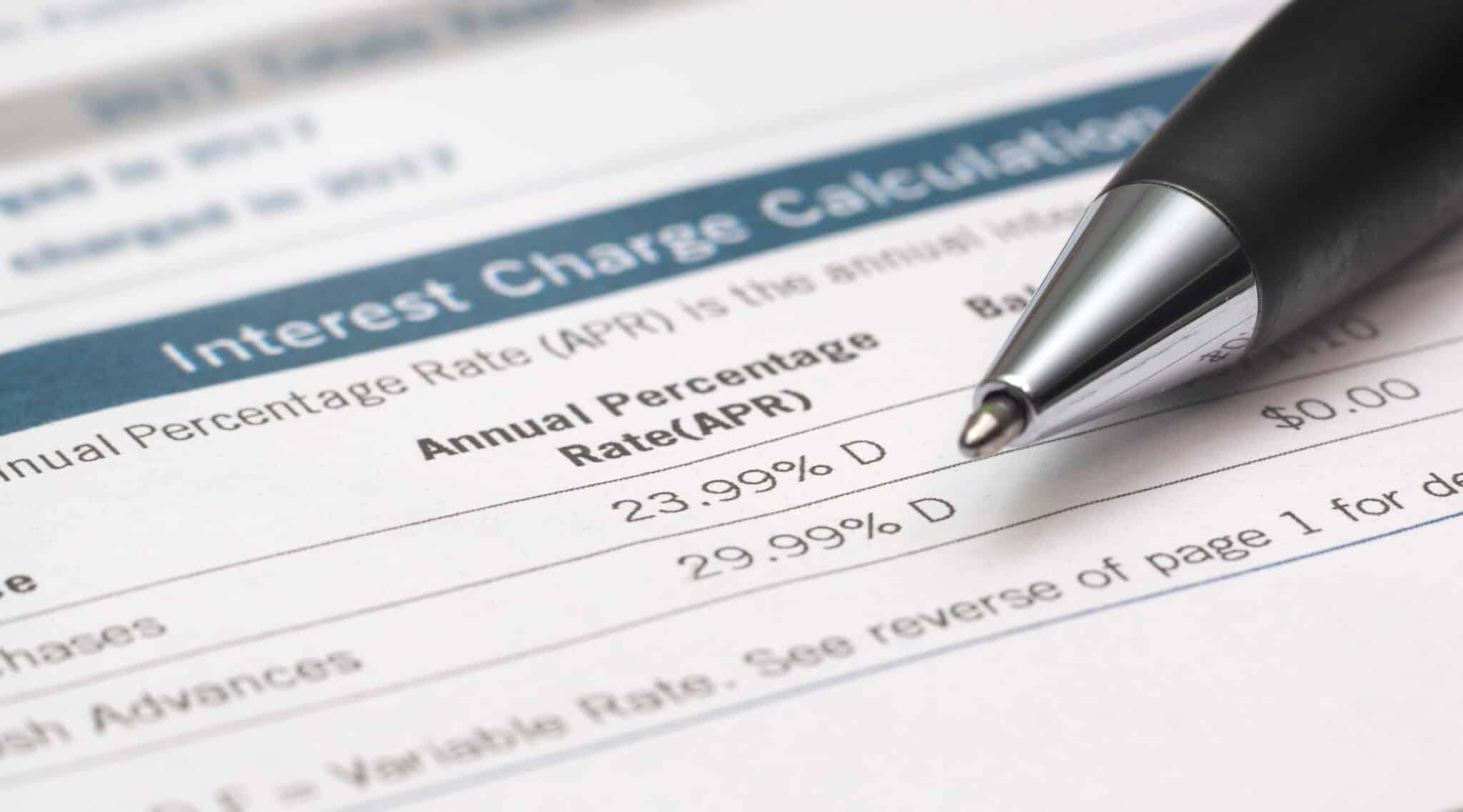Understanding Credit Card Interest Rates
In today’s digital era, credit cards have emerged as more than just a convenience; they are now an integral part of our financial toolkit. However, the widespread use of credit cards has brought to light the critical importance of understanding the nuances associated with credit card interest, a significant factor that influences our financial health.
As we embark on unraveling the complexities of credit card interest, this article aims to shed light on the various elements that make up the structure of credit card interest rates. It seeks not only to explain the “science” behind it but also to empower you with knowledge, enabling you to make informed decisions and manage your debts effectively.
Whether you are a seasoned credit card user or someone who has recently embarked on their credit journey, grasping the intricacies of credit card interest can pave the way for a stable financial future. Let us delve deep into the science behind credit card interest and unravel the strategies to navigate this critical aspect of financial management successfully.
Stay with us as we break down the numbers, demystify the jargon, and provide you with the tools you need to master the world of credit card interest. Through understanding comes empowerment, and through empowerment comes the ability to carve out a path to financial freedom.
Starting with the Basics
In order to embark on a journey to financial literacy and freedom, we first need to anchor our understanding of the fundamentals of credit card interest. This section serves as a cornerstone, offering a clear lens through which we can comprehend the broader landscape of credit finances.
Definition of Credit Card Interest
At its core, credit card interest is a charge levied by credit card issuers on the outstanding balance of your credit card. This interest is essentially the cost you pay for the convenience of borrowing money and is a primary revenue source for credit card companies. Typically expressed as an Annual Percentage Rate (APR), it signifies the annual rate charged for borrowing or earned through an investment, and it is calculated as a percentage of your outstanding balance.

Contrasting Credit Card Interest with Other Types of Interest
When we dig deeper into the world of financial interest, it becomes apparent that not all interests are created equal. Here, we pinpoint the distinguishing features that set credit card interest apart:
- Variable Interest Rates:
- Credit Card: Often subject to variable rates, fluctuating based on the prime rate or another benchmark.
- Other Loans (e.g., Mortgages and car Loans): May offer fixed interest rates, providing stability and predictability in repayment amounts.
- Calculation Frequency:
- Credit Card: Interest is usually calculated daily, making it imperative to pay off balances promptly to avoid high charges.
- Other Loans: Interest might be calculated monthly or annually, which can result in a lower overall interest cost if managed well.
- Grace Periods:
- Credit Card: Offers a grace period during which no interest is charged if the full balance is paid off.
- Other Loans: May not offer grace periods, and interest begins accruing immediately upon disbursement.
- Impact on Credit Score:
- Credit Card: Maintaining a low credit card balance can positively influence your credit score.
- Other Loans: While timely repayments are beneficial, the type of debt can sometimes impact your credit score differently.
Understanding the nuances that differentiate credit card interest from other types of interest is a fundamental step in mastering credit card debt management. As we proceed, we will delve deeper into the calculations and influences that dictate credit card interest rates, equipping you with the knowledge to navigate your financial journey with confidence.
In the next section, we will dissect the methods and formulas used in calculating credit card interest, demystifying the numbers game and providing you with actionable insights.
The Calculation Behind Credit Card Interest
Navigating the realm of credit card interest rates can sometimes feel like decoding a complex mathematical puzzle. Yet, with a bit of guidance, it is possible to demystify these calculations, turning them into useful tools to manage your debt more effectively. In this section, we dissect the critical components of credit card interest calculations, facilitating a deeper understanding and a more strategic approach to credit card usage.
Daily vs. Monthly Interest Rates
Understanding the difference between daily and monthly interest rates is paramount in foreseeing the potential charges that may accrue on your credit card balance. Let’s decipher these terms:
- Daily Interest Rate: This is calculated by dividing the APR by the number of days in a year (usually 365). It indicates the amount of interest accrued on your balance each day.
- Monthly Interest Rate: This rate is calculated by dividing the APR by 12 (the number of months in a year). It gives an overview of the interest that accrues on your balance on a monthly basis.
By grasping these concepts, you can better anticipate your potential interest charges and manage your payments more strategically.
The Concept of Annual Percentage Rate (APR)
Central to understanding credit card interest is the concept of the Annual Percentage Rate, or APR. It represents the yearly cost of borrowing money and is expressed as a percentage of your outstanding balance. Credit card companies often offer different APRs for various transactions such as purchases, cash advances, and balance transfers. Here, we unpack the different types of APRs you might encounter and what they signify.
Balance Calculation Methods
The amount you owe in interest can vary significantly depending on the method used to calculate your balance. Here are some commonly used methods:
- Daily Balance Method: This method calculates the interest daily, applying the daily rate to the balance at the end of each day.
- Average Daily Balance Method: Here, the interest is calculated based on the average balance over the billing cycle, which is then multiplied by the daily rate and the number of days in the billing cycle.
- Adjusted Balance Method: This method applies the monthly rate to the balance remaining at the end of the billing cycle, excluding new purchases.
- Previous Balance Method: This method calculates the interest based on the balance at the beginning of the billing cycle, disregarding any payments or new charges made during the cycle.
Understanding the balance calculation method employed by your credit card issuer can be a powerful tool in managing your debt effectively, helping you strategize repayments and minimize interest charges.
As we dig deeper into the science behind credit card interest, it becomes apparent that having a robust understanding of these calculations can be a game-changer in achieving financial stability. In the next section, we will explore the factors that influence the variation in credit card interest rates, enabling you to steer your financial ship with greater confidence and foresight.
Factors Influencing Credit Card Interest Rates
While it may sometimes seem like credit card interest rates are set arbitrarily, they are actually influenced by a number of key factors. As consumers, having an understanding of these elements not only demystifies the rates we see on our statements but also enables us to potentially leverage them in our favor. In this section, we delve into the critical factors that dictate the fluctuation of credit card interest rates, shedding light on the role of the Federal Reserve, the impact of individual credit scores, and the varied interest rates applied to different types of transactions.
The Federal Reserve’s Role
The Federal Reserve, often referred to as the Fed, plays a pivotal role in determining credit card interest rates. Here’s how:
- Setting the Federal Funds Rate: The Fed sets this benchmark interest rate, which indirectly influences the interest rates set by credit card companies.
- Influence on Prime Rate: Most credit card interest rates are tied to the prime rate, a variable interest rate determined by individual banks that is typically a few percentage points above the Federal Reserve’s rate.
- Economic Policy and Stability: The Fed utilizes interest rate adjustments as a tool to either stimulate economic growth or curb inflation, both of which can affect credit card interest rates.
Understanding the Fed’s role provides a macro lens through which to view the fluctuations in credit card interest rates, illustrating the broader economic forces at play.
Individual Credit Score Impact
Your personal credit score is another vital factor that can significantly influence the interest rates you are offered. Here’s why:
- Risk Assessment: Credit card companies use credit scores as a metric to assess the risk associated with lending to an individual. Higher scores often translate to lower interest rates.
- Credit Utilization Ratio: This ratio, which compares your credit card balances to your credit limits, can impact your credit score and consequently your interest rates.
- History of Repayment: Consistent timely repayments can enhance your credit score, potentially securing you more favorable interest rates in the future.
Awareness of the impact of your credit score allows you to take proactive steps to maintain or improve it, securing better interest rates over time.
Different Interest Rates for Purchases, Cash Advances, and Balance Transfers
It’s also essential to be cognizant of the fact that not all transactions are treated equally when it comes to interest rates. Here, we explore the different rates applied to various transactions:
- Purchases: The standard rate applied to items bought with a credit card. This rate can often be the baseline rate offered by the card issuer.
- Cash Advances: These transactions usually attract higher interest rates compared to purchases, reflecting the higher risk perceived by the card issuer.
- Balance Transfers: While often offering lower introductory rates to encourage users to transfer balances, the rates can spike after the introductory period ends.
By understanding the varied interest rates applied to different transactions, you can make informed decisions, managing your credit card usage in a way that minimizes interest charges.
As we unravel the layers influencing credit card interest rates, it becomes evident that knowledge in these areas can be a powerful ally in managing your financial health. In the next section, we will delve into the intricacies of compound interest, a concept central to the science behind credit card interest.
How Compound Interest Works
In the landscape of credit card finances, compound interest stands as a double-edged sword. When understood and harnessed correctly, it can work in your favor, helping you grow investments over time. Conversely, when left unchecked, it can exponentially increase the amount you owe. This section explores the nature of compound interest, breaking down its definition and illustrating its impact through real-life examples.
Definition and Explanation of Compound Interest
Compound interest is the process where interest is calculated on the initial principal, which also includes all of the accumulated interest from previous periods on a deposit or loan. It differs from simple interest, where the interest is calculated only on the principal amount. In the context of credit cards, compound interest can rapidly escalate the amount you owe if you do not pay off your full balance each month.
The formula for compound interest is given as:
Where:
is the amount of money accumulated after n years, including interest.
is the principal amount (the initial amount of money).
is the annual interest rate (in decimal form).
is the number of times that interest is compounded per year.
is the time the money is invested for, in years.
Real-life Examples to Illustrate the Impact of Compound Interest
Credit Card Debt Accumulation:
Scenario: Imagine you have a credit card balance of $1,000 with an annual interest rate of 18%. If you make no payments and the interest is compounded monthly, after one year your balance would grow to approximately $1,195.
Calculation: Using the formula,
Investment Growth:
Scenario: On a more positive note, if you invest $1,000 at an annual interest rate of 5%, compounded yearly, in 10 years, your investment would grow to approximately $1,629.
Calculation: Using the formula,
These examples illustrate both the peril and the potential of compound interest, showing how it can either amplify your debt or accelerate the growth of your investments.
Armed with this knowledge, you can approach your financial planning with a clearer perspective, leveraging the power of compound interest to your benefit and avoiding its potential pitfalls. In our next section, we will explore strategies to mitigate the impact of compound interest on credit card debts, steering you toward a path of financial stability.
Tips to Minimize Credit Card Interest
Navigating the intricate landscape of credit card interest rates requires a tactful approach. By being proactive and informed, you can effectively minimize the accruing interest on your credit card debt, paving the way for financial wellness. This section provides essential tips that can help you reduce the burden of credit card interest, empowering you to take charge of your financial journey.
Making Timely Payments
One of the easiest and most effective ways to keep credit card interest in check is by ensuring timely payments each month. Here are a few points to consider:
- Avoiding Late Fees: Making payments on time helps you avoid late fees, which can quickly add up and increase your debt.
- Maintaining Credit Score: Timely payments positively influence your credit score, which can lead to better interest rates in the future.
- Preventing Interest Accumulation: Paying at least the minimum amount due each month prevents your debt from ballooning due to the addition of unpaid interest.
Setting up automatic payments or reminders can be a practical step in ensuring that you never miss a due date.
Paying More than the Minimum Amount
While it might be tempting to pay only the minimum amount due, especially during financially tight periods, doing so can lead to higher interest in the long run. Here’s why paying more than the minimum is beneficial:
- Reducing Principal Faster: By paying more than the minimum, you reduce the principal amount faster, which in turn lowers the interest accrued in subsequent cycles.
- Shortening Debt Tenure: Larger payments help you clear your debt quicker, freeing you from the cycle of debt sooner than anticipated.
- Saving Money: In the long run, paying more than the minimum amount can save you a significant amount of money that would otherwise be spent on interest.
Utilizing Balance Transfer Offers
Balance transfer offers can be a lifeline when you are stuck with high-interest credit card debt. Here’s how to use them effectively:
- Lower Interest Rates: These offers often come with lower interest rates, sometimes even 0% for an introductory period, which can provide relief from high interest.
- Consolidating Debts: Utilizing balance transfer offers can help in consolidating multiple credit card debts into one, making it easier to manage.
- Creating a Repayment Plan: With lower interest rates, you can create a more manageable repayment plan, helping you to pay off your debt faster.
It is important to carefully read the terms of the balance transfer offer to ensure that it truly benefits you in the long term.
As you forge ahead on your financial journey, these tips can serve as a roadmap to guide you, helping minimize credit card interest and fostering financial stability. In the next section, we will explore the psychological aspects of debt, uncovering the emotional toll it can take and offering strategies to navigate it with resilience.
Final Thoughts
In the multifaceted realm of personal finance, gaining a profound understanding of credit card interest stands as a cornerstone to fostering financial stability and autonomy. As we have navigated through the intricacies of credit card interest rates, the underlying principle resonates clearly: knowledge is power. By delving deep into the mechanics of how interest rates work, the factors influencing them, and the pervasive impact of compound interest, we equip ourselves with the tools necessary to make informed decisions and steer our financial ship wisely.
Understanding the science behind credit card interest is more than just a financial literacy exercise; it’s an essential strategy for avoiding the pitfalls of debt accumulation and fostering a healthy financial future. Through this lens, the seemingly daunting financial statements transform into clear, navigable roadmaps leading toward fiscal well-being.
Your Next Steps
Now, it’s your turn to take the reins. We encourage you to set aside time to meticulously review your credit card statements, dissecting the nuances that influence your interest rates. It’s an opportunity to reassess your financial strategies, paying more than the minimum amount where possible and making timely payments to circumvent the snowballing effect of compound interest.
Moreover, consider utilizing balance transfer offers judiciously to consolidate debts and potentially lower your interest rates. Remember, each step you take toward understanding and managing your credit card debt is a stride toward financial freedom and peace of mind.
As you stand on the cusp of a new financial chapter, remember that the journey to financial wellness is a continuous one, sprinkled with both learning and growth. We invite you to embrace this journey, managing your debts wisely and fostering a future replete with financial stability and prosperity.



